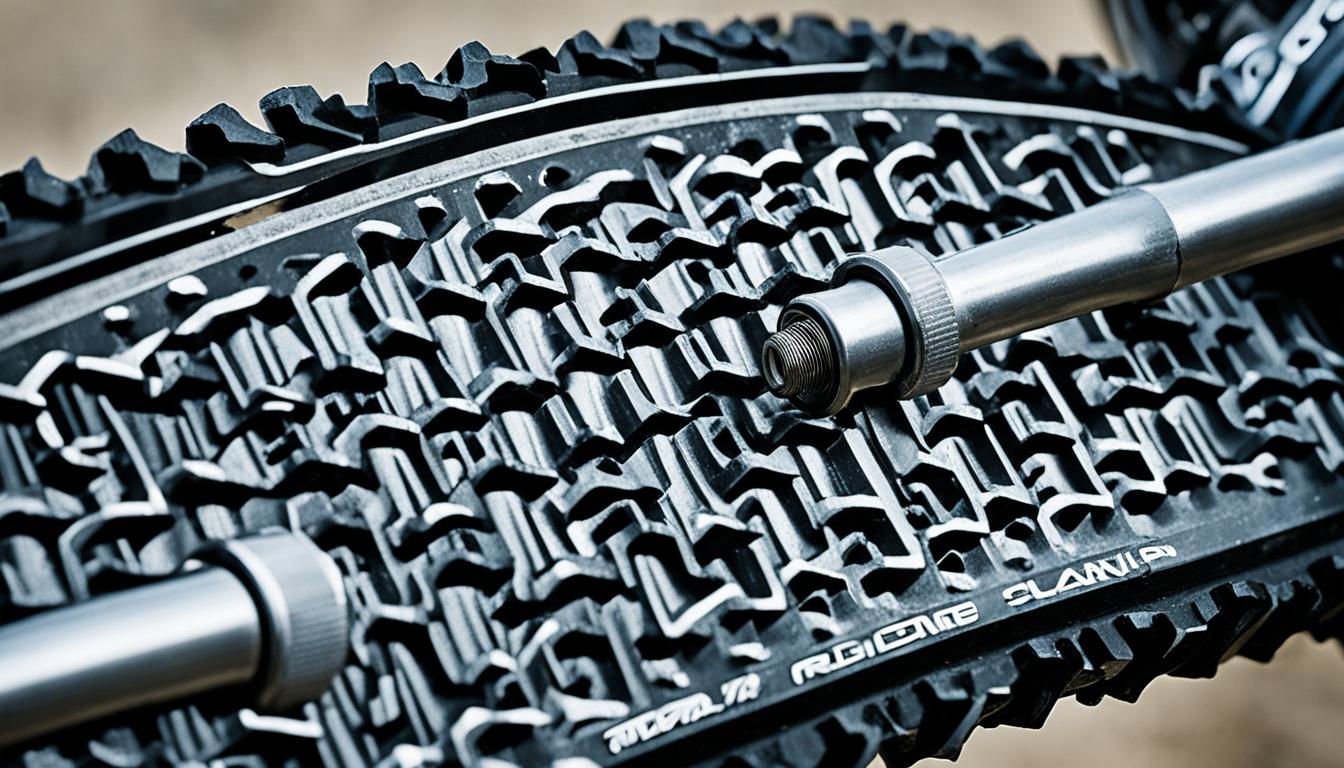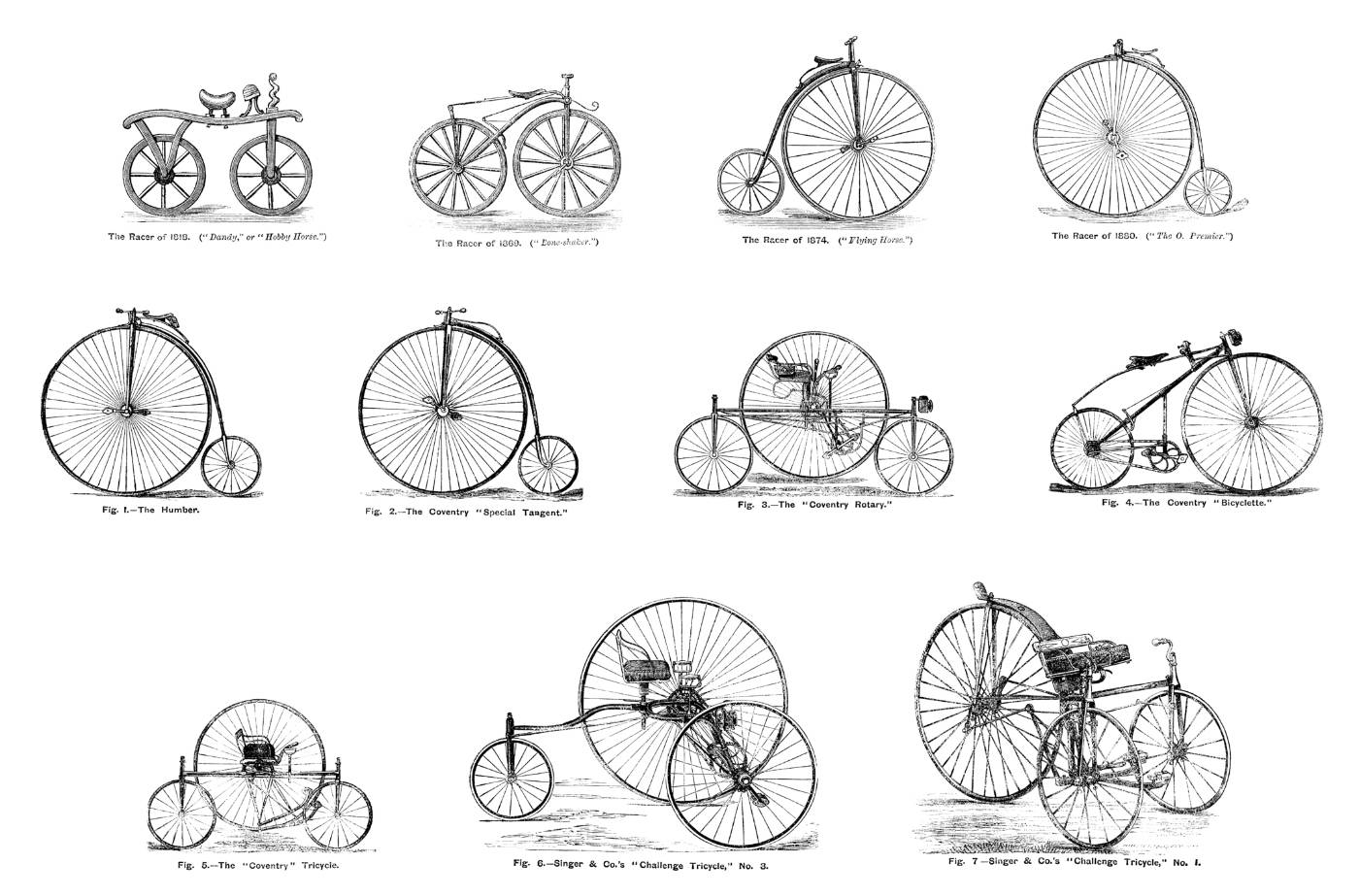Did you know that when you purchase a brand new mountain bike, it doesn’t come with pedals? That’s right! The essential component that connects you to the bike is missing. But why is that? Why do manufacturers leave it up to you to choose the pedals for your new ride? Let’s dive into the world of mountain bike pedals and find out why this surprising fact is actually a benefit for riders.
Key Takeaways:
- Mountain bikes don’t come with pedals to allow riders to choose the best pedals for their specific needs and preferences.
- There are two main types of mountain bike pedals: clipless pedals and flat pedals.
- The choice of pedal type can greatly impact the overall biking experience, and by not including pedals with the bike, riders have the freedom to select the pedals that best suit their individual needs and preferences.
- Excluding pedals helps manufacturers reduce production costs and offer bikes at different price ranges.
- By selling mountain bikes without pedals, manufacturers provide consumers with the opportunity to choose their preferred type of pedal separately, catering to the diverse needs and preferences of riders.
Variety in Mountain Bike Pedal Types
When it comes to mountain biking, choosing the right pedals is essential for a comfortable and enjoyable ride. There are two main types of mountain bike pedals: clipless pedals and flat pedals. Let’s explore each of these pedal types and their unique features.
Clipless Pedals
Clipless pedals may sound counterintuitive, but they are the go-to choice for many mountain bikers. These pedals use a cleat system that attaches to the rider’s cycling shoes, providing a secure connection between the foot and the pedal. This connection offers maximum control, stability, and pedaling efficiency, especially during technical rides and challenging terrains.

Designed for serious riders, clipless pedals allow for efficient power transfer, enabling cyclists to generate more force with each pedal stroke. They also provide consistent foot placement, ensuring a balanced and controlled riding experience. However, it’s important to note that using clipless pedals requires practice and getting used to the quick-release mechanism for safety purposes.
Flat Pedals
If you prefer a more casual and relaxed cycling experience, flat pedals, also known as platform pedals, are the way to go. These pedals feature a wide, flat surface that allows riders to comfortably place their feet without the need for specialized cycling shoes.
Flat pedals provide a sense of freedom on the trails, allowing for easy foot adjustments and quick removal of the foot from the pedal if needed. This makes them a popular choice for riders who frequently encounter technical sections or prefer to ride with regular footwear. The larger platform of flat pedals provides more stability and confidence during jumps, drops, and tricks.
While flat pedals may not offer the same efficiency as clipless pedals when it comes to power transfer, they promote a more relaxed riding style and allow riders to rely on their natural pedal stroke. Flat pedals are also easier to use for beginners, as they eliminate the learning curve associated with clipless pedal systems.
Ultimately, the choice between clipless pedals and flat pedals comes down to personal preference and riding style. Some riders prioritize maximum control and performance, while others prefer the freedom and versatility offered by flat pedals. Whatever your preference may be, both pedal types have their advantages and can enhance your mountain biking experience.
Personalization of Biking Experience
When it comes to mountain bike pedals, personal preferences play a crucial role in shaping the overall biking experience. Every rider has their own unique needs and desires when it comes to how they connect with their bike, and the choice of pedal type can make a significant difference.
For some riders, control, stability, and a strong connection to the bike are of utmost importance. They seek pedals that provide maximum power transfer and ensure their feet stay securely in place, especially during intense climbs and technical sections. These riders prioritize performance and efficiency, as they strive to conquer challenging terrain with precision.
On the other hand, there are riders who lean towards a more relaxed and recreational biking experience. They prioritize comfort, freedom of movement, and the ability to easily adjust their foot position on the pedals. These riders may prefer a flat pedal setup, which allows them to quickly and effortlessly put a foot down for balance or to navigate obstacles without the hassle of clipping in and out.
The beauty of not including pedals with a mountain bike purchase is that riders have the freedom to select the pedals that best suit their individual needs and preferences. Whether it’s choosing between clipless pedals or flat pedals, riders have the opportunity to create a truly personalized biking experience that aligns with their riding style and goals.
So, whether you’re a rider who thrives on maximum control and efficiency or someone who prefers a more laid-back approach, the choice of mountain bike pedals allows you to tailor your biking experience to suit your own personal preferences.
Our Personal Preference: Flat Pedals
“Flat pedals offer a sense of freedom on the trails. They allow for easy foot adjustments and give me the confidence to quickly put a foot down when needed. Plus, they make me feel more connected to my bike and give me the flexibility to experiment with different foot positions for better handling.” – Sarah, avid mountain biker

Cost Considerations for Manufacturers
When it comes to mountain bikes, one might wonder why they don’t come with pedals. Well, one of the main reasons is to reduce production costs for manufacturers. By excluding pedals from the package, they can offer bikes at a more affordable price point, especially for lower-end models. This allows a wider range of riders to access and enjoy the thrill of mountain biking without breaking the bank.
Furthermore, higher-end mountain bikes often do not come with pedals either. This is because these bikes generally cater to experienced riders who already have their preferred pedals. By offering the bike without pedals, manufacturers can provide these riders with the flexibility to use their own trusted pedal systems, ensuring a seamless integration between the bike and the rider’s personal setup.
Optimizing production costs is crucial for manufacturers, as it allows them to offer bikes at different price ranges, appealing to a broader market. By providing bikes without pedals, they can focus on enhancing other aspects of the bike’s performance, such as the frame, suspension, and components. This approach aligns with the diverse needs and preferences of riders, enabling manufacturers to cater to a wider audience.
Ultimately, the choice to exclude pedals from mountain bikes is driven by cost considerations. It allows manufacturers to offer bikes at competitive prices while giving riders the freedom to select their preferred pedals. Whether riders opt for flat pedals, clipless pedals, or another type altogether, they can personalize their biking experience and enjoy the thrill of mountain biking with a setup that suits their individual style and preferences.
| Advantages | Disadvantages | |
|---|---|---|
| Cost Reduction for Lower-End Models | ✔️ More affordable price point | |
| Flexibility for Experienced Riders | ❌ Potential inconvenience for beginners | |
| Enhanced Focus on Bike Performance | ✔️ Ability to optimize other bike components |

By excluding pedals, manufacturers can focus on delivering high-quality bikes that cater to a wide range of riders, maximizing performance and enjoyment on the trails.
Market Diversity and Consumer Choice
When it comes to mountain bike pedals, the market offers a diverse range of options to cater to various consumer preferences. From flat pedals to clipless pedals and hybrid designs, riders have the opportunity to choose the perfect pedal type that suits their individual needs. By providing mountain bikes without pedals, manufacturers empower consumers to personalize their biking experience and optimize their performance on the trails.
Let’s take a closer look at the different types of mountain bike pedals:
1. Flat Pedals

Flat pedals, also known as platform pedals, are popular among riders who prefer a more relaxed and casual cycling experience. These pedals offer easy foot adjustment and provide a sense of freedom on the trails. With a larger contact area, flat pedals promote better weight distribution and technique utilization. They are low-maintenance and deliver increased power and stability, making them a great choice for riders seeking versatility and maneuverability on diverse terrains.
2. Clipless Pedals
Clipless pedals, despite their name, actually involve clipping in to secure the rider’s shoes to the pedal. These pedals utilize a cleat system and offer maximum control, stability, and pedaling efficiency. They enable riders to maintain a consistent and fast cadence, reducing fatigue and ensuring optimal power transfer. Clipless pedals are particularly favored by experienced riders who prioritize a connection to the bike and precise control, especially on technical terrains.
3. Hybrid Pedals
Hybrid pedals combine the best of both worlds, providing riders with the option to switch between flat pedals and clipless pedals. These pedals feature a dual-sided design with a flat platform on one side and a clipless mechanism on the other. Hybrid pedals offer versatility and cater to riders who appreciate the flexibility to adapt to different riding styles or quickly transition between clipless and flat options.
“The diversity in pedal designs allows riders to choose the type that aligns with their preferences, riding style, and comfort. Whether you’re a beginner exploring off-road trails or an experienced rider seeking maximum efficiency and control, the market has pedal options to suit everyone.”
The market diversity in mountain bike pedals empowers riders to select the perfect pedal type that complements their skills and delivers an optimal riding experience. By not including pedals with the bike, manufacturers acknowledge the importance of consumer preferences and provide a wide array of choices to cater to the diverse needs of riders.
| Pedal Type | Advantages | Disadvantages |
|---|---|---|
| Flat Pedals |
|
|
| Clipless Pedals |
|
|
| Hybrid Pedals |
|
|
Flat Pedals for Mountain Biking: PROS
When it comes to mountain biking, flat pedals offer a range of advantages that make them a popular choice among riders. Whether you’re a beginner exploring the trails or an experienced rider looking for a different riding experience, flat pedals have a lot to offer.

1. Safety and Confidence
One of the key advantages of flat pedals is the ease of disengaging from the bike. With flat pedals, you can quickly and easily remove your feet from the pedals, providing a sense of safety and confidence. This is particularly important when navigating challenging sections of the trail or encountering unexpected obstacles.
2. Freedom and Maneuverability
Flat pedals allow for more freedom and maneuverability on the trails. Unlike clipless pedals, which require a specific motion to engage and disengage, flat pedals offer a more natural foot movement. This makes it easier to navigate technical sections, corners, and jumps, giving you greater control and agility on the bike.
3. Focus on Technique and Weight Distribution
Using flat pedals encourages riders to focus on using their feet to control the bike. This promotes better technique and weight distribution, as you learn to actively use your feet to steer, balance, and apply pressure. By honing these skills, you can enhance your overall biking performance and feel a stronger connection with the bike.
4. Low Maintenance
Flat pedals are known for their simplicity and durability. They don’t require specialized cleats or complex adjustments, making them easy to install and maintain. With flat pedals, you can spend more time riding and less time worrying about pedal maintenance.
5. Increased Power and Stability
Flat pedals provide a larger platform for your feet, allowing for increased power transfer and stability. The larger surface area distributes your weight more evenly, providing a solid foundation for pedaling and generating power. This can be particularly beneficial when climbing, sprinting, or navigating rough terrain.
| Advantages of Flat Pedals | |
|---|---|
| Safety and Confidence | Freedom and Maneuverability |
| Focus on Technique and Weight Distribution | Low Maintenance |
| Increased Power and Stability |
Flat Pedals for Mountain Biking: CONS
While flat pedals offer numerous advantages for mountain biking, it’s essential to consider the potential disadvantages they bring. Understanding these drawbacks can help riders make informed decisions regarding their choice of pedals. Let’s take a closer look at the disadvantages of flat pedals:
- Increased risk of unexpected foot slippage: Without the secure locking mechanism provided by clipless pedals, there is a higher chance of your feet coming off the flat pedals unexpectedly. This can result in potential crashes and loss of control. Maintaining proper technique and foot positioning becomes even more crucial to mitigate this risk.
- Reduced pedaling efficiency: Compared to clipless pedals, flat pedals may slightly compromise pedaling efficiency. While this may not be a major concern for casual riders, those seeking maximum power transfer and efficiency during intense rides may find flat pedals to be less suitable.
- Challenges in maintaining high cadence and power on rough terrain: Flat pedals can make it harder to maintain a high cadence or power through rough and technical terrain. The absence of a secure attachment to the pedal can lead to potential foot slippage, making it more challenging to generate consistent power and maintain a smooth pedal stroke.
- Attention and consistency required for foot placement: With flat pedals, riders need to pay extra attention to maintaining consistent foot placement. The absence of a clipless system means there is no automatic guiding mechanism to keep your feet optimized for power transfer. Riders must consciously focus on positioning their feet correctly to maximize control and riding efficiency.
- More vulnerable to hitting trail obstacles: Flat pedals typically have a larger surface area compared to clipless pedals. While this can provide a more stable platform, it also increases the risk of hitting trail obstacles such as rocks, roots, or logs. Riders need to consider the potential for pedal strikes and adjust their riding style accordingly.
It’s important to note that the disadvantages of flat pedals should not overshadow their many advantages. Each rider’s skill level, riding style, and personal preferences should be taken into account when deciding whether flat pedals are the right choice for mountain biking adventures.

Clipping in for Mountain Biking: PROS
In the world of mountain biking, clipless pedals offer a range of advantages that enhance your riding experience. Let’s dive into the benefits of using clipless pedals on the trails.
– Maintaining a Consistent and Fast Cadence: With clipless pedals, your feet are securely attached to the pedals, allowing for a smoother and more efficient pedaling motion. This enables you to maintain a consistent cadence, keeping your momentum and speed up throughout your ride.
– Utilizing Full Pedal Strokes: By using clipless pedals, you can take advantage of full pedal strokes, engaging both the upstroke and the downstroke. This maximizes your power output and helps to reduce fatigue, especially during long climbs or challenging terrain.
– Offering Foot Placement Consistency: Clipless pedals provide a consistent foot placement on the pedal, ensuring that your feet are always in the optimum position for power transfer. This results in improved overall efficiency and control, allowing you to tackle technical sections with precision.
– Easier Pedaling over Rough Terrain: With clipless pedals, your feet are firmly attached to the pedals, providing greater stability and control over rough and uneven terrain. This allows you to pedal through obstacles without the fear of your feet slipping off the pedals.
– Greater Rear Wheel Control: The connection between your feet and the pedals provided by clipless pedals translates to enhanced rear wheel control. This enables you to better maneuver your bike, making it easier to navigate tight corners and technical descents.
– Increased Clearance over Trail Obstacles: Clipless pedals typically have a low-profile design, providing increased clearance over trail obstacles such as rocks, roots, and logs. This allows you to ride over these obstacles without the fear of hitting your pedals and potentially losing balance.
– More Efficient Power Transfer: Clipless pedals promote a more efficient power transfer from your legs to the bike. The direct connection between your feet and the pedals ensures that all your energy is effectively transferred to the drivetrain, maximizing your pedaling efficiency.
Clipless pedals truly elevate your mountain biking experience by increasing your control, efficiency, and overall riding performance. With their many advantages, it’s no wonder that they are a popular choice among avid mountain bikers.

So, if you’re looking to take your mountain biking to the next level, consider making the switch to clipless pedals and enjoy the benefits they have to offer.
“We found that using clipless pedals significantly improved our pedaling efficiency and control on the trails. The connection between our feet and the pedals allowed us to confidently tackle technical sections and maintain a consistent and fast cadence throughout our rides.” – Experienced Mountain Bikers
Clipping in for Mountain Biking: CONS
While clipless pedals offer numerous advantages, it’s important to consider their disadvantages as well. Understanding the potential drawbacks of clipless pedals can help riders make informed decisions about their mountain biking setup.
1. Getting Stuck and Potential Crashes
One disadvantage of clipless pedals is the risk of getting stuck in the pedals. This can be particularly hazardous when riders need to quickly put a foot down for balance, increasing the likelihood of crashes. The reliance on clipping in and out quickly, especially in challenging sections of the trail or during climbs, can also add to the difficulty and potential for accidents.
2. Unexpected Detachment and Crashes
Another concern with clipless pedals is the possibility of unexpectedly coming unclipped during a ride. This sudden detachment can catch riders off guard and lead to crashes, especially in technical terrain where control and stability are crucial. Riders need to develop the necessary skill and muscle memory to prevent unintentional unclipping.
3. Cleat Setup and Potential Injury
Clipless pedals require proper cleat setup for optimal performance and safety. Incorrect cleat positioning can result in discomfort, inefficiency, and even injury. Riders must take the time to properly install and adjust their cleats to avoid potential issues such as knee strain or foot discomfort.
4. Raised Center of Gravity and Control
Using clipless pedals can slightly raise the rider’s center of gravity on the bike. This can affect the overall control and handling of the mountain bike, especially during technical maneuvers or when navigating challenging terrain. Riders need to adapt to the altered bike dynamics and ensure they maintain a balanced and controlled riding position.

Conclusion
The choice of mountain bike pedals is crucial for creating a personalized riding experience. Manufacturers understand this and deliberately leave the selection of pedals to riders. By not including pedals with the bike, manufacturers allow us to tailor our bikes to our individual needs and preferences. This level of customization enhances the enjoyment and satisfaction we derive from our biking adventures.
Whether we opt for flat pedals or clipless pedals, the diverse market ensures that there is a pedal type for every rider. Flat pedals offer a sense of freedom and maneuverability, allowing us to easily navigate technical sections and corners while promoting better technique. On the other hand, clipless pedals provide superior control, stability, and pedaling efficiency, enabling us to maintain a consistent and powerful cadence.
Ultimately, it is our personal preferences and riding style that dictate our choice of mountain bike pedals. We can select the pedal type that aligns with our skills, style, and budget. This freedom of choice empowers us to create a personalized riding experience that caters to our specific needs and ensures that every pedal stroke brings us closer to the thrilling joy of mountain biking.









